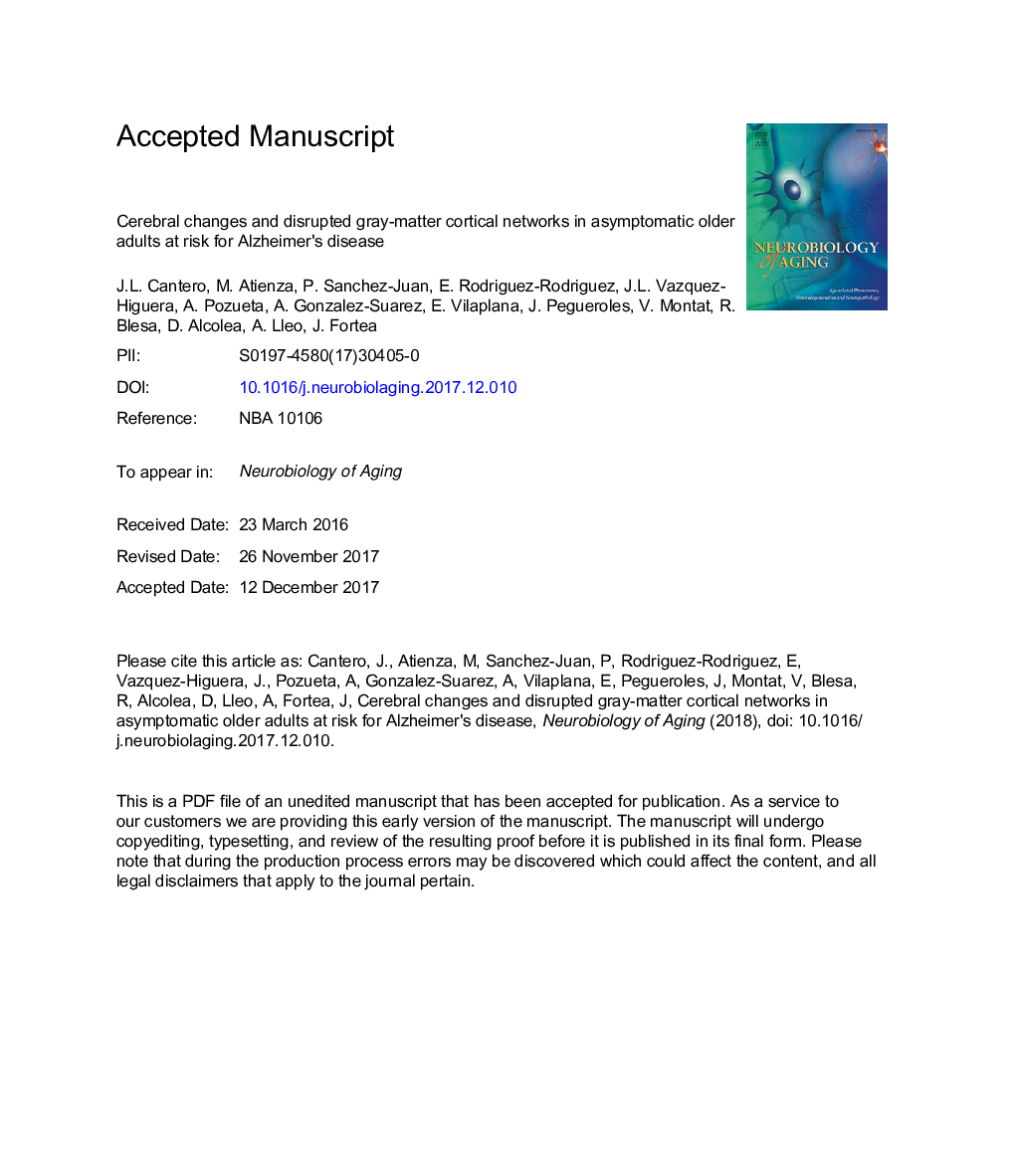| Article ID | Journal | Published Year | Pages | File Type |
|---|---|---|---|---|
| 6803000 | Neurobiology of Aging | 2018 | 51 Pages |
Abstract
The diagnostic value of cerebrospinal fluid (CSF) biomarkers is well established in Alzheimer's disease, but our current knowledge about how abnormal CSF levels affect cerebral integrity, at local and network levels, is incomplete in asymptomatic older adults. Here, we have collected CSF samples and performed structural magnetic resonance imaging scans in cognitively normal elderly as part of a cross-sectional multicenter study (SIGNAL project). To identify group differences in cortical thickness, white matter volume, and properties of structural networks, participants were split into controls (N = 20), positive amyloid-β (Aβ1-42+) (N = 19), and positive phosphorylated tau (N = 18). The Aβ1-42+ group exhibited thickening of middle temporal regions, while positive phosphorylated tau individuals showed thinning in the superior parietal and orbitofrontal cortices. Subjects with abnormal CSF biomarkers further showed regional white matter atrophy and more segregated cortical networks, the Aβ1-42+ group showing heightened isolation of cingulate and temporal cortices. Collectively, these findings highlight the relevance of combining structural brain imaging and connectomics for in vivo tracking of Alzheimer's disease lesions in asymptomatic stages.
Related Topics
Life Sciences
Biochemistry, Genetics and Molecular Biology
Ageing
Authors
Jose L. Cantero, Mercedes Atienza, Pascual Sanchez-Juan, Eloy Rodriguez-Rodriguez, Jose Luis Vazquez-Higuera, Ana Pozueta, Andrea Gonzalez-Suarez, Eduard Vilaplana, Jordi Pegueroles, Victor Montal, Rafael Blesa, Daniel Alcolea, Alberto Lleo, Juan Fortea,
